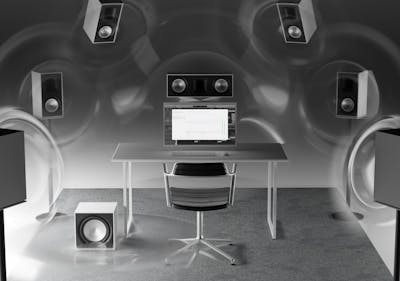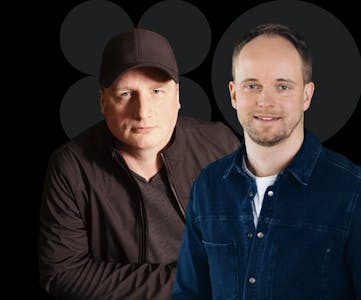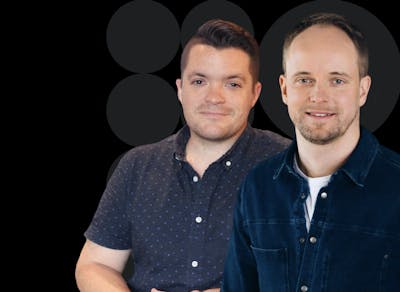Cameron Craig is the sort of seasoned pro you just want to soak up experience from. A Grammy Award-winning producer, mixer and engineer, his credits read like a ‘who’s who’ of the last 30 years of the music industry – Adele, Annie Lennox, U.N.K.L.E, Grace Jones, Bjork, Tina Turner, Paulo Nutini, Amy Winehouse, Suzanne Vega and Sia, to name but a few.
He’s worked everywhere from the tiniest of rooms to the largest of commercial studios; from dressing rooms backstage to spontaneous jams in artists’ houses. A real talent, he can usually judge just walking into a session what mic will suit what voice, and prefers to ‘fix things in the mic’ upfront rather than have to engineer it all later. We chatted to him about his work, and how even at the top of his game Sonarworks has ‘come to his rescue’, converting him to headphones and transforming his monitoring.
It’s all about being in the right environment, the right mood to get a performance.
An Aussie native, Craig cut his teeth playing in bands at school before landing a job in a Melbourne studio where he picked up some training and went freelance at a very young age and getting a nomination for ARIA Engineer of the Year in 1995. Feeling that if he was going to advance any further he’d have to do something drastic and doing it on a high would help so he moved to England in 1996, starting all over again making a name for himself in a new country. “There was a lot of soul-searching and looking back when I moved to England; it was very hard. I had about a year of not working, trying to get a foot in the door; it was very much starting over. Anything I’d done of any value in Australia (where I’d been involved in many multi-platinum/platinum albums) people didn’t know of here. I was asked ‘who have you worked with?’ and as I hadn’t worked with predictable Australian names: Kylie, Nick Cave or INXS that was pretty much end of the conversation! That was a very weird time for me.”
He eventually started working at boutique studios like Chiswick Reach and 2kHz, “relearning everything I knew” and meeting like-minded people through whom he found work across the musical genres and set off forming the impressive resume he boasts today.
Craig’s approach is very much to try to ’fix things in the mic’ – “I record things as I want to hear them finished, get it right at the source. We did that for the concert footage on the Grace Jones film Bloodlight and Bami recorded live in Dublin. The balance that’s on the film is pretty much unchanged from the balance I did on the laptop in the dressing room after the show. We’d been working with Grace for a long time, working with MD/Producer Ivor Guest we got the arrangements of the songs and source sounds right, it made the technical side just work so much easier.”
It’s all about being in the right environment, the right mood to get a performance. Grace is such a stage performer, if you sit down in the studio and tell her ‘we’re going to do this vocal tonight and you need to be fantastic’, that just won’t happen. Sophie Fiennes who was making the film of Grace around the making of the Hurricane album said they were coming round to film and get some vocals shots so we got set up and because the camera was there, Grace was on form, we managed to get three vocals that made it onto the Hurricane album – even the vocals for the track Hurricane were actually done while we were tracking! A lot of artists I’ve worked with over the last 10 or 15 years work like that – U.N.K.L.E, Grace Jones – they essentially go in with an idea and a 15-minute jam turns into a song.”
I’ll try the Sonarworks to see how that works, I put that on and just thought ‘Oh wow, this is great!’ Now I can’t listen to my headphones any more without it – you’ve ruined my headphones!”
Authentic performance is far more important to Craig than throwing a lot of tech at artists ‘just in case’. “I’m pretty good at judging these days from someone’s voice what a mic will sound like. Occasionally I’ll get it wrong and we’ll have to swap a mic, but 9 times out of 10 I’ll get the right combination of the right mic for the right voice. I wasn’t always like that; it’s down to experience: it’s taken a while to build up a library of sonic memories.”
Craig first heard about Sonarworks when experimenting with how to solve a little niggle in his current room: “We have a little bit of a bottom-end issue; it irked me at first but I’ve got used to it and know how to deal with it, but gradually I thought maybe I should look at some of these correction programmes and see what’s happening there.” But his real ‘Eureka moment’ came when a client insisted he listen to their album tracking on headphones: “The album I’m mixing at the moment, the client is listening to it a lot on headphones; I’ve never really mixed on headphones before (I don’t really like them!) but I went out and bought some which seemed nice and comfortable and sounded quite pleasing. I put them on to listen to this thing, and then thought I’ll try the Sonarworks to see how that works, I put that on and just thought ‘Oh wow, this is great!’ Now I can’t listen to my headphones any more without it – you’ve ruined my headphones!”
An issue with the acoustic guitar sound on one track in particular made Craig realise how valuable listening on headphones could be: “There was an issue with one of the guitar bits on one of the songs early on, some weird little thing, some click throwing it off; and I just couldn’t hear it on speakers. But listen on headphones and the whole thing span out of whack for a second, it was really obvious on headphones. I thought ‘Wow, maybe I need to work on headphones a little bit more!’ Sonarworks has really come to the rescue on this; it makes working on headphones viable.”
He’s found Sonarworks has transformed the approval rate from clients, with artists often approving the very first version of a track rather than needing three or four tweaks. “I tried mixing a few things with Sonarworks on my speakers; did a couple of mixes for my current project, and with both mixes version one came back from the client with ‘yeah great’. Rather than version three or four! So I thought ‘there must be something in this then…’ And I’ve been using it ever since!” In a world of increasingly tight deadlines and limited budgets, getting approval on first mix is gold dust: “The more accurate the monitoring the quicker I can get the song mixed and approved.”
And unlike some new users, Craig was not thrown by the software producing a very different sound to that he was used to: “I’m used to quite varied environments so it didn’t take too long to adjust; you do get what you think is right balance then when you put Sonarworks on you think ‘Urgh that is weird’, but then you just rebalance with it in place and all of a sudden everything makes sense.”
With his years of ingrained experience, Craig admits he sympathises with stubborn engineers who shy away from tech like Sonarworks, saying they know their room and their speakers, and don’t need any extra fixes – “I was one of them! I thought ‘I know my room and I work around any issues, I don’t need headphones!” But he’s the first now to try and talk them round, extolling the virtues of the packages. “You might already be making good records, but I think with Sonarworks that can happen a lot quicker”.
“I tried mixing a few things with Sonarworks on my speakers; did a couple of mixes for my current project, and with both mixes version one came back from the client with ‘yeah great’. Rather than version three or four! So I thought ‘there must be something in this then…’ And I’ve been using it ever since!”
Quite the compliment from someone who has had his share of ‘good records’ – we think the ‘ruining’ of his headphones has been forgiven…



